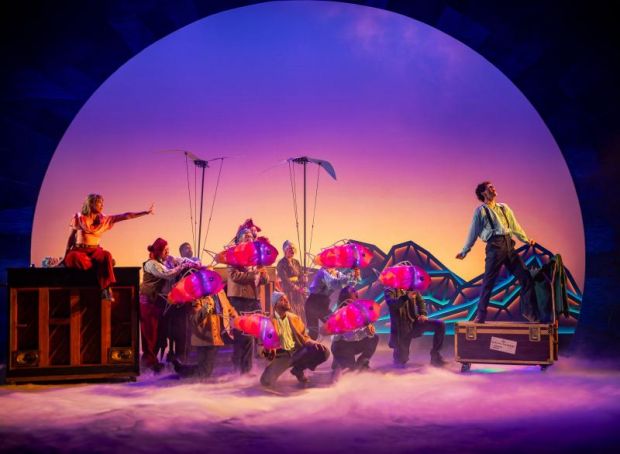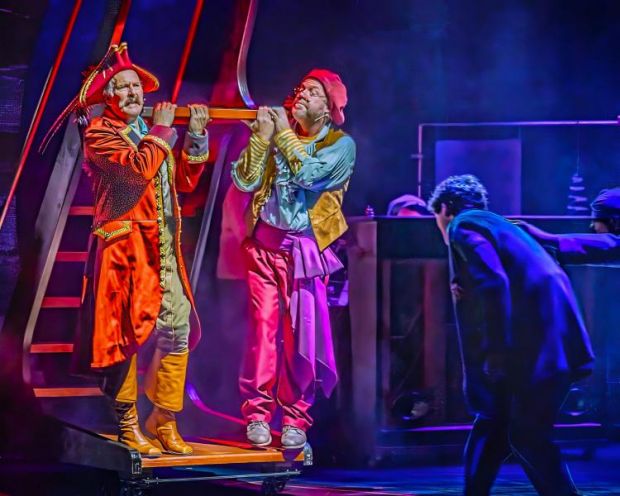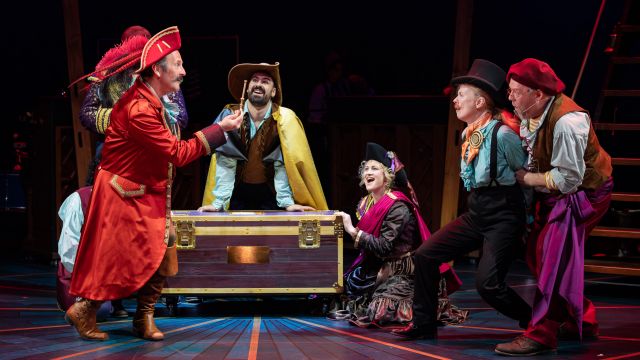Peter and the Starcatcher
Peter and the Starcatcher premiered in the off-Broadway New York Theatre Workshop (winning six awards) and played on Broadway as a Disney production for nine months from April 2012 (collecting eight further awards, including five Tony Awards), and it has been staged several times since and remains popular for good reason.
Adapted from the 550-page novel Peter and the Starcatchers, by Dave Barry and Ridley Pearson, Rick Elice’s play Peter and the Starcatcher provides an entertaining Peter Pan prequel in which we learn how Peter Pan and Captain Hook became those characters and eternal foes at the island to be named Neverland — and how Peter gained the ability to fly.
The story’s premise is of a mission, taking two ships, for Lord Leonard Aster to destroy a substance called starstuff: a substance so dangerous that the Crown has sent Lord Aster (accompanied by his daughter, Molly) to destroy it on a distant volcanic island, because it enables people to become whatever they want to be — and of three orphan boys sent from Britain on one of the same ships to “assist” the king of the island’s inhabitants, the Mollusks (who, by the way, hate Britishers with a vengeance), in feeding a fearsome crocodile (yes, that crocodile); and of a pirate crew’s dastardly threats to life and mission.

It’s probably due to the challenge of condensing a sizeable, fairly complicated novel into a play of reasonable length that the adaptation left aspects open to misinterpretation. The decision to have an actress play Lord Leonard Aster was one that some children in the audience found confusing, and it may be handy to know before the play commences that the “sand” that pirates eventually steal from the British Crown is in fact not sand but rather starstuff.
Peter and the Starcatcher offers a lovely theatrical experience for anybody from the age of about ten. For younger children, the show’s complexity offered a challenge, and for those younger still it could be a bit long, especially the first act. The second (and final) act was, or at least seemed, significantly shorter, more straightforward, and better paced, in terms of action, to keep the audience awake and guessing. The jokes that pirate leader Captain Stache directs every so often at the audience, and even quiet acknowledgements that their adventures are a story on stage, merely add to the fun.

Amongst its other strengths, Dead Puppet Society and Glass Half Full Productions’ take on this prequel has great visual appeal: detailed costuming; fantastical bird, fish, and reptilian puppetry, with surprisingly lifelike motion; and dazzling stage and set design.
On top of all this, and complementing the action, came live music on stage, performed by up to seven musicians at a time on a great range of instruments, and a number of ensemble songs, all sung with accuracy and harmonised with daring and panache. All in all, the play’s visual and musical artistry was an experience for the senses that kept the audience constantly engaged.
John P. Harvey.
Photographs: Peter and the Starcatcher. Photographers: top 2 pictures by Daniel Boud, picture 3 by Helen Fletcher.
Subscribe to our E-Newsletter, buy our latest print edition or find a Performing Arts book at Book Nook.

